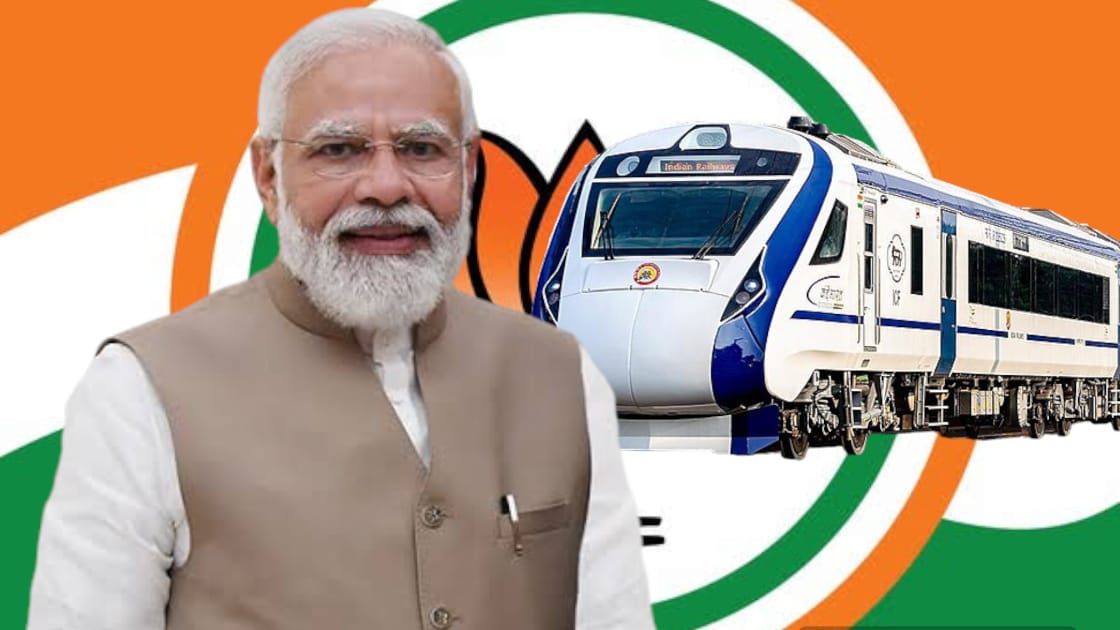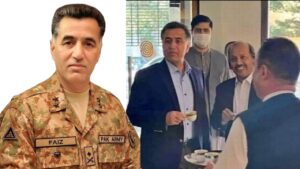“Evolution of BJP: From Organisational Structures to Modi-Centric Transformation in the 1980s and 90s”
In the 1980s and 90s, the Nav-Punrjivit Bharatiya Janata Party, a distinct party, made this claim. The tagline was well-chosen by K.R. Malkani. BJP’s organisational groups convened on a regular basis during that era, but Congress, the ruling party, operated under a centralised command structure.

Within the RSS framework, autonomous and unbiased talks were promoted by the BJP’s organisational structures. State capitals hosted meetings of the National Executive (NE). During the open three-day media summit at the National Council meeting, representatives engaged in a lively discussion of the party’s policy and internal operations.
Both then and now, it still is. Consider the National Council meeting from last month. Amit Shah and J.P. Nadda’s addresses reverberated every day, but Modi’s speech took the stage on both days.
Party representatives used to travel in special trains and meet with a lot of journalists. Renowned leaders such as L.K. Advani and Murli Manohar Joshi took trains and met with delegates and reporters, having private and group conversations. We gained a fair understanding of the internal affairs of the BJP.
Also Read| “Political Turmoil in Haryana: BJP-JJP Alliance on the Brink as Chief Minister Resigns 2024”
The presidents of the BJP held off on making any announcements until after conferring with the RSS, as well as current or former Northeastern officials. Back then, Nagpur promoted unbiased and autonomous internal discussions inside the family groups. Under the previous BJP, the NE would have been an unthinkable forum for divisive problems to be discussed and solutions found.
Northeastern matters were pushed off until the following meeting, and discussions frequently stopped on unclear notes. Meetings for deliberation on contentious matters were called. At the Sariska Conference, which focused mostly on the 1991 economic changes implemented under Narasimha Rao, Advani’s Swadeshi Jagran Manch caused a great deal of friction with the group.
Jay Dubashi, Sundar Singh Bhandari, K.L. Sharma, Malkani, and Murli Manohar Joshi were then given backing. Following the Sariska conference, a conference was convened in Gandhinagar where a final economic policy paper known as the Gandhinagar Declaration, or the ‘Swadeshi Alternative’, was drafted.
Elections within the organisation were held independently. Locally, the BJP’s alleged use of forged voter lists during the Modi administration was seen as hostility to free and fair elections. Tehsil, district, and state governments largely reached a consensus on decisions made under central supervisors.
Chief ministers were decided upon following lengthy discussions involving leaders of the RSS, the BJP, and rival state factions. On the other hand, intriguing stories concerning other BJP candidates for chief minister were making the rounds today.
All of this is now past history. The BJP is no longer a viable political force, having dissolved as a movement based on natural ties with its constituents. Direct communication with voters is what Narendra Modi favours. Everything that stands in the way between the leader and the electorate is an obstacle that need to be removed. The new vision is as follows.
Another blow has befallen the vast army of middle-level employees, who served as a conduit and were essential in getting the word out to the grassroots. Their influence has significantly decreased as a result of the Modi-centric political rhetoric and electoral campaigns. The entire chain of command has undergone a dramatic transformation, with technology and specialists assuming the forefront.
Locally, BJP and RSS activists of the past have given way to favoured candidates for jobs such as booth in-charges, page heads, and similar duties. Well-informed groups that articulately discuss all advantageous angles have gained control. They consistently use their new roles to further their careers in the workplace. The old-fashioned labourers who steal large sums of money for parties are gradually disappearing.
Like all good autocrats, Modi hates leaders who have their own fan base. During the first stages of internal democracy, the BJP viewed these politicians as highly valuable resources. However, Modi believes they are potential rivals and troublemakers. He removed all of the senior chief ministers for this reason. Shivraj Singh Chouhan and Vasundhara Raje Scindia are two of the marginalised individuals. Their places have been taken by nameless new selections.
Another intriguing paradox of the Modi era is this one. While the Hindutva problem is still far too ripe, the RSS under Mohan Bhagwat has suffered serious defeats. Modi is displacing Bhagwat and his RSS more and more. Modi has assumed the post of head priest and priest in both Ayodhya and Abu Dhabi, and his inauguration as the monarch of Hindu hearts is complete.
The Hindutva community is also excitedly observing Modi as their leader and source of inspiration. The PMO in New Delhi is progressively becoming the hub of Hindutva instead of Nagpur. Modi has become the leading representative of Hindutva. The authority of the RSS has never before declined to this extent.







9 thoughts on “Evolution of BJP: From Organisational Structures to Modi-Centric Transformation in the 1980s and 90s”
advokatssr.ru
Breaking News, Pictures, Videos, and Special Reports from The Star News Today
https://todayodianews.com/
updating baths
Do you need reviews on google, reviews on voting sites, do you need someone to create gmail accounts, do you want to increase the views of your youtube video, or do you need people to perform small tasks on the Internet, and much more you can solve through the site https://todayodianews.com/
https://todayodianews.com/
Превратите свой дом в уютное гнездо с помощью натурального бутового камня! Наш камень не только придаст вашему интерьеру шарм и элегантность,
но и прослужит вам долгие годы благодаря своей прочности и надежности. Создайте уникальный дизайн своего дома с помощью нашего качественного бутового камня
и окружите себя красотой и теплом природы – бутовый камень.
Доброго всем дня!
Вы когда-нибудь писали диплом в сжатые сроки? Это очень ответственно и тяжело, но нужно не сдаваться и делать учебные процессы, чем Я и занимаюсь)
Тем кто умеет разбираться и гуглить информацию, это действительно помогает по ходу согласований и написания диплома, не нужно тратить время на библиотеки или встречи с дипломным руководителем, вот здесь есть хорошие данные для заказа и написания дипломов и курсовых с гарантией и доставкой по России, можете посмотреть здесь https://todayodianews.com/decoding-supporting-roles-robert-downey-jr-s/, проверено!
купить диплом университета
купить диплом цена
купить диплом института
купить аттестат
купить диплом Гознак
Желаю всем нужных отметок!
child porn
https://todayodianews.com/decoding-supporting-roles-robert-downey-jr-s/
Pingback: The polling party will walk three days in Himachal Pradesh and 13 kilometres with know about Himachal Pradesh weather - TON.com latest trending news and topics